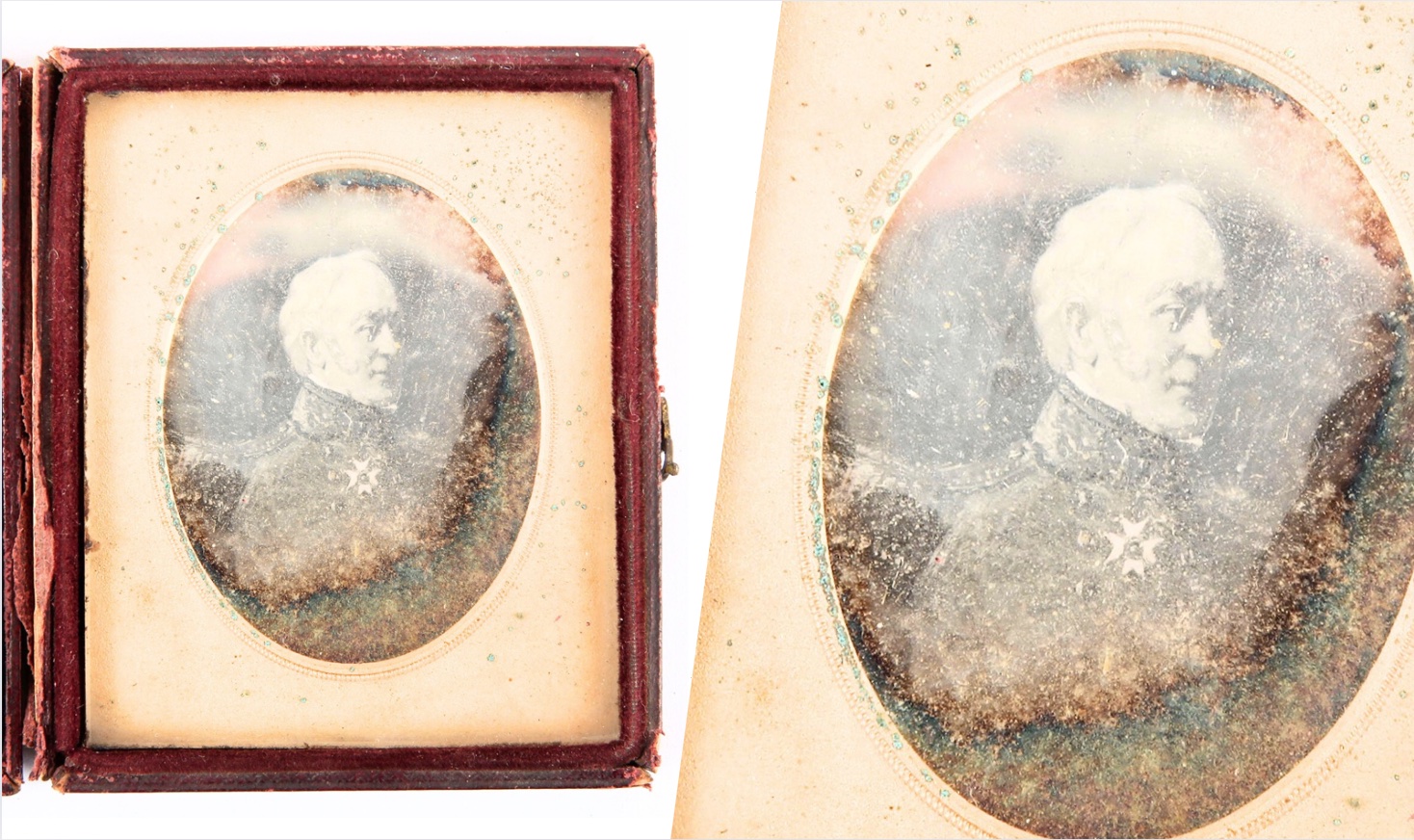#Early #photo #Duke #Wellingtons #brotherinlaw #sale #Antique #Collecting
A very early photograph of the Duke of Wellington’s brother-in-law – himself a celebrated military man – is for sale at Ewbank’s auction in Surrey on September 27.
Dating to the late 1840s, the daguerreotype shows Lieutenant-General Sir Hercules Robert Pakenham, KCB (1781-1850) the brother of Catherine Pakenham, and thereby the brother-in-law of Arthur Wellesley, Duke of Wellington.

The grey-haired sitter faces right and wears the eight-pointed badge of the Order of the Bath. The image comes in its original case marked By Appointment/Mr. Kilburn/234 Regent Street. The 8 x 6.5cm case contains a handwritten note stating: ‘General Sir Hercules Pakenham KCB/Brother-in-law of the Duke of Wellington/The Great-Grandfather of Joan Campbell nee Pakenham’.
Pakenham enjoyed a distinguished military career, initially serving at Roliça (1808) in Portugal, the first battle of the Peninsular War, where he suffered a slight injury. “He is really one of the best officers of riflemen I have seen,” wrote his commander, the then Sir Arthur Wellesley, who had married Pakenham’s sister two years earlier, as he recommended him for promotion.

Further action in the Peninsular War came in 1810 when serving as a major and assistant adjutant-general to General Picton at Badajos, where Pakenham was severely wounded.
A steady stream of promotions culminated in his lieutenant-colonelcy to the Coldstream Guards in 1814, and he retired after the war three years later, going on to become aide-de-camp to King George IV in May 1825.
Later posts included Lieutenant-Governor of Portsmouth and General Officer Commanding South-West District in 1839. In 1844 he was appointed colonel of the 43rd Light Infantry, and two years later lieutenant-general. It would have been around this time or soon after that the daguerreotype was taken.
Appointed Companion of the Order of the Bath (CB) exactly two weeks before the Battle of Waterloo, he became a knight of that order in 1838, and received the Peninsular silver medal and Roleia and Vimeiro clasps.
Pakenham died suddenly at his residence, Langford Lodge, County Antrim on March 7, 1850. He is commemorated by a memorial at the Royal Garrison Church in Portsmouth, dedicated by his daughter, Elizabeth Thistlethwayte.
Kilburn’s work, both in portraiture and landscape, is well known. He notably took a wide vista image of the Chartist Meeting on Kennington Common in 1848, as well as a portrait of Prince Albert the same year. Kilburn had already taken the first daguerreotype portraits of The Queen and her family in April 1847, and presumably it was at a similar time that Pakenham sat for this image.
Kilburn’s Regent Street Studio was opened in 1846, and a year or so later he was appointed Photographist to Her Majesty and His Royal Highness Prince Albert. Images that Kilburn took of Victoria and her family are illustrated in the 1977 National Portrait Gallery publication Happy and Glorious/130 Years of Royal Photographs. These include two daguerreotypes, taken on January 17, 1852.
The daguerreotype comes to auction after coming down through the general’s family as an heirloom. The estimate is £300-500.
“We can narrow the date down to a period of less than four years when this image was taken,” said Senior Valuer and Auctioneer David Wackett. “Daguerre unveiled his new invention in the late 1830s, but Kilburn did not open his studio until 1846, while General Pakenham died in March 1850. It may have been taken to mark his promotion to Lieutenant-General in November 1846.
“Whatever the date, it is a fascinating portrait of a man who was at the centre of the action as the history that shaped Europe for over 100 years was taking place – and as the brother-in-law of the architect of that history, he would have been privy to a great deal more of what was going on than most.”




